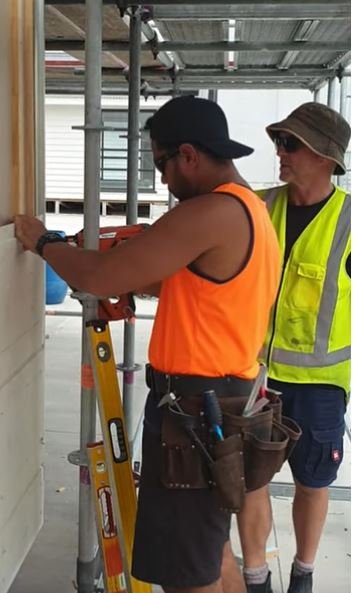5 Lessons I’ve Learned working as a Qualified Project Manager and Trade Certified Carpenter
At Vaai Ltd, my journey has been shaped by a unique blend of qualifications in building science and hands-on experience in carpentry. This combination has defined not only how I approach construction but also how I lead. Here are the top five lessons that have guided me along the way:
1. Building a Strong Foundation is Key
The first decade of my career was spent mastering both the theoretical and practical sides of construction using a combination of studies, programs and shadowing other professionals who had already excelled in the fields of construction. That dual focus has been invaluable as a business owner. Understanding the intricacies of office-based planning and on-site execution allows me to bridge gaps that often exist in our industry. Walking onto a job site with the ability to truly grasp the systems and processes at play is both empowering and essential.
2. Integrity and Respect Build Trust
Leadership isn’t just about issuing directives—it’s about earning trust. Too often, I’ve seen friction arise when managers lack the technical expertise to guide teams effectively.
Early in my career, I was the inexperienced manager learning on the fly, but that experience taught me the value of combining technical knowledge with practical experience. When teams see that I understand their work—and can even roll up my sleeves to help—they trust me. That respect fuels better teamwork, stronger communication, and greater project success.
3. Closing the Gap Through Hands-On Experience
Despite my degrees in architecture and training with Tier 1 construction companies, I knew something was missing. Basic site tasks—like running a string line, spotting for a truck, or marking engineered bolt placements—weren’t in my skill set.
This gap was a constant reminder of what I lacked. I knew respect as a leader depended on my ability to master the basics, so I immersed myself in hands-on trade work. That decision transformed my confidence, my approach to projects, and my teams’ respect for my leadership.
4. 3D Modeling Enhances, But Doesn’t Replace, Traditional Workflows
The rise of BIM and 3D model-based workflows has incredible potential, but practical experience has taught me when—and when not—to rely on them.
Drawings remain essential. They’re not just instructions; they’re legally binding documents. Models should complement traditional workflows, not replace them. Striking this balance requires a deep understanding of both the craft and the technology—a perspective I’ve gained from working on both sides of the industry.
5. Lifelong Learning is Invaluable
Mastering the intersection of management and trade work has been a long, rewarding journey. The technical expertise I’ve gained, combined with practical skills and a passion for construction, continues to shape how we approach projects at Vaai Ltd.
At Vaai, we bring a holistic approach to every project—one that values experience, innovation, and respect for the craft of building.




